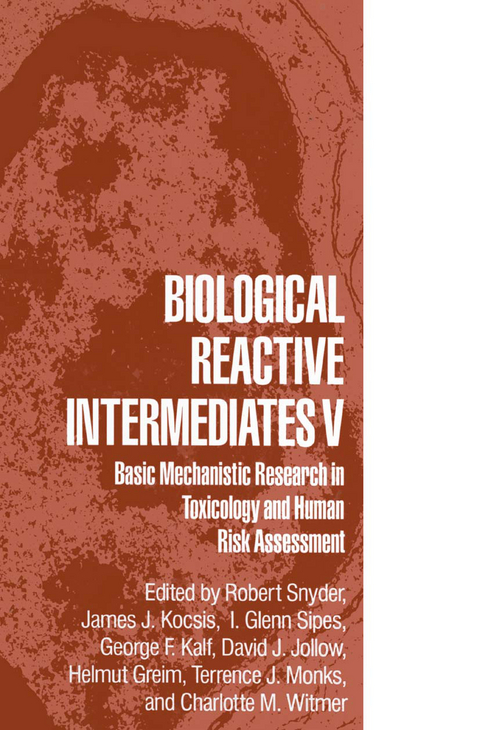
Biological Reactive Intermediates V
Springer-Verlag New York Inc.
978-1-4757-9482-3 (ISBN)
Much of organic chemistry is based on the ability of suitably structured chemicals to bind together through the formation of covalent bonds. Biochemistry is replete with exam ples of enzymatically catalyzed reactions in which normal body constituents can be linked through covalent bonds during the process of intermediary metabolism. The finding that xenobiotic chemicals that enter the body from the environment, are metabolized to highly reactive species, and then covalently react with cellular macromolecules to induce toxic and carcinogenic effects was an observation that spawned the research featured in the Fifth International Symposium on Biological Reactive Intermediates (BRI V). The group of investigators that became fascinated with this process and its signifi cance in terms of human health began their discussions in Turku, Finland (J 975), and continued them at Guildford, England (1980), College Park, Maryland (1985), Tucson, Arizona (1990), and Munich, Germany (1995). Among the results were a series of reports listed below, as well as the book for which this serves as the Preface. • Jollow, DJ., Kocsis, J.J., Snyder, R. and Vainio, H. (eds), Biological Reactive Intermediates: Formation, Toxicity and Inactivation, Plenum Press, NY, 1975. • Snyder, R., Park, D.V., Kocsis, J.J., Jollow, D.V., Gibson, G.G. and Witmer, C.M. (eds), Biological Reactive Intermediates II: Chemical Mechanisms and Biological Effects, Plenum Press, N.Y., 1982.
New Biological Reactive Intermediates: Metabolic Activation of Thiophene Derivatives; D. Mansuy, P.M. Dansette Activation of Toxic Chemicals by Cytochrome P450 Enzymes Regio and Stereoselective Oxidation of Aflatoxin B1; F.P. Guengerich, et al. Reactions of Reactive Metabolites with Hemoproteins: Toxicological Implications; Y. Osawa, et al. Immunochemical Detection of Drug-Protein Adducts in Acetaminophen Hepatoxicity; J.A. Hinson, et al. Some Studies on the Activities of the Oxidant Chromate; H.S. Park, et al. Reactive Dopamine Metabolites and Neurotoxicity: Implications for Parkinson's Disease; T.G. Hastings, et al. The Kidney as a Target for Biological Reactive Intermediates: Linking Metabolism to Toxicity; T.J. Monks, et al. Reactive Intermediates of Xenobiotics in Thyroid: Formation and Biological Consequences; U. Andrae Ethylene Oxide as a Biological Reactive Intermediate of Endogenous Origin; M. Törnqvist Estrogen Metabolites as Bioreactive Modulators of Tumor Initiators and Promoters; L. Bradlow, et al. Biosynthesis and Cellular Effects of Toxic Glutathione Sconjugates; W. Dekant Application of Computational Chemistry in the Study of Biologically Reactive Intermediates; M.W. Anders, et al. Species Differences in Metabolism of 1,3butadiene; R.F. Henderson 35 additional articles. Index.
| Reihe/Serie | Advances in Experimental Medicine and Biology ; 387 |
|---|---|
| Zusatzinfo | XIV, 462 p. |
| Verlagsort | New York, NY |
| Sprache | englisch |
| Maße | 155 x 235 mm |
| Themenwelt | Medizin / Pharmazie ► Medizinische Fachgebiete ► Onkologie |
| Medizin / Pharmazie ► Medizinische Fachgebiete ► Pharmakologie / Pharmakotherapie | |
| Naturwissenschaften ► Biologie ► Biochemie | |
| ISBN-10 | 1-4757-9482-7 / 1475794827 |
| ISBN-13 | 978-1-4757-9482-3 / 9781475794823 |
| Zustand | Neuware |
| Haben Sie eine Frage zum Produkt? |
aus dem Bereich


